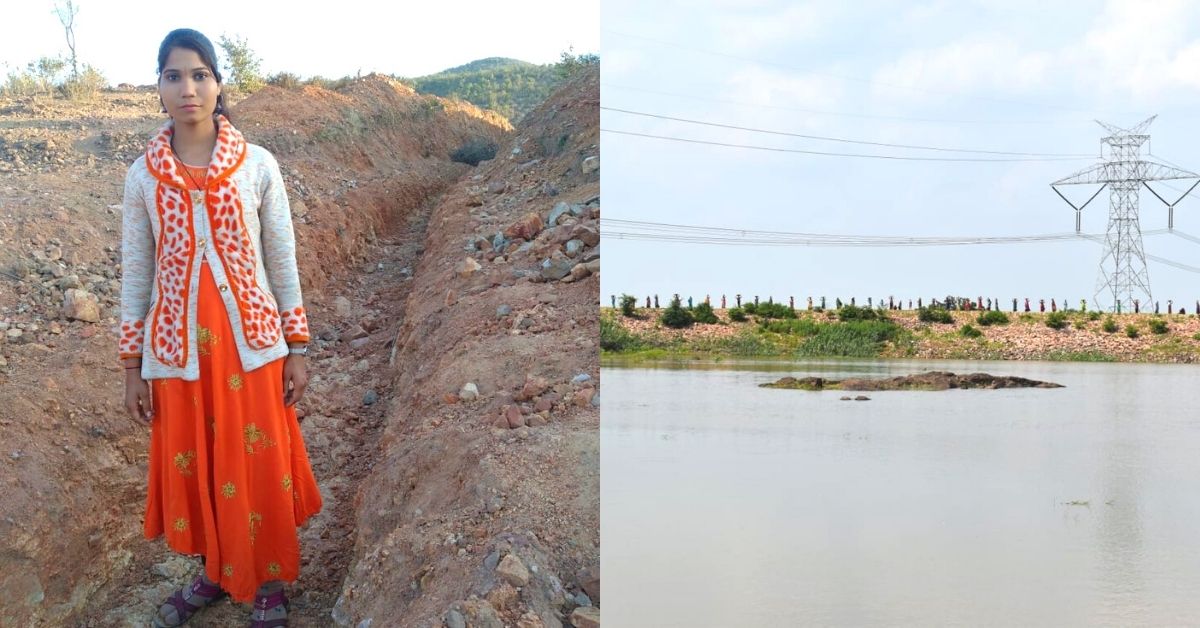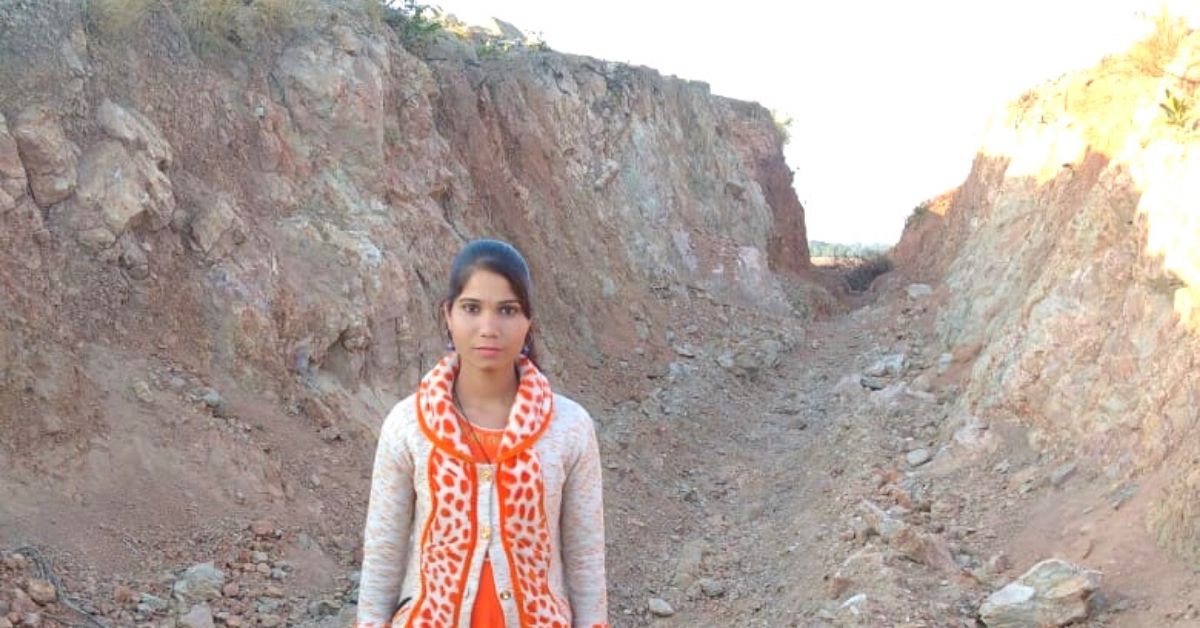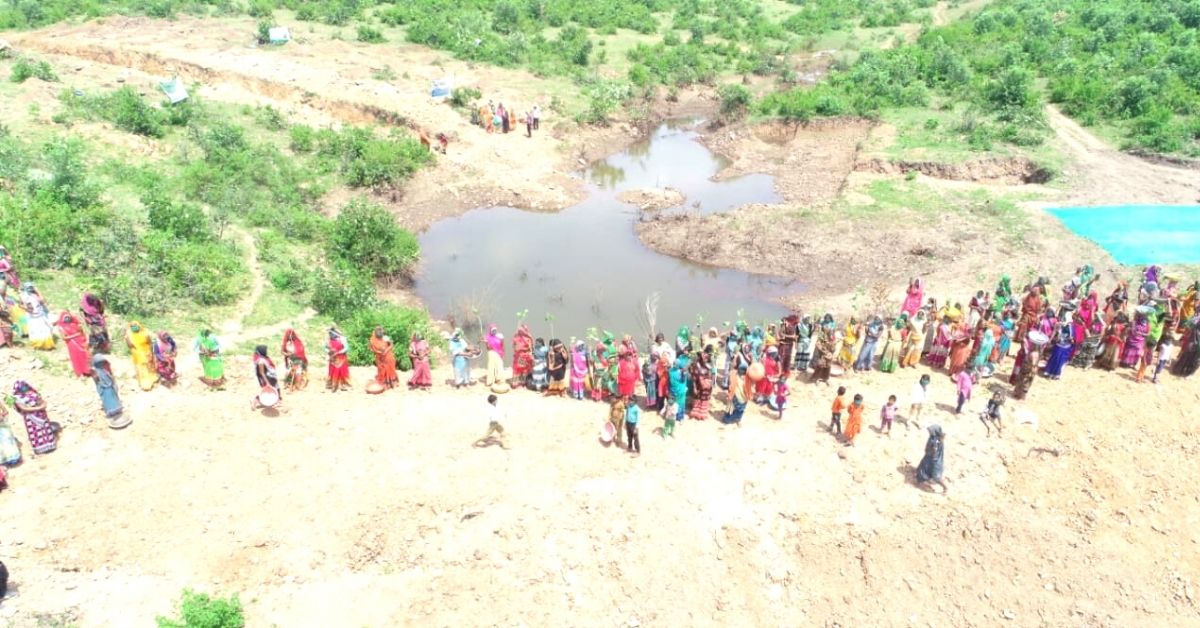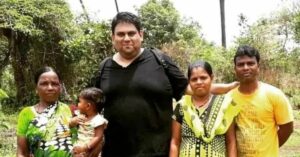19-YO Solves Water Crisis in Bundelkhand, Inspires 200 Women to Revive 70 Acre Lake
Babita Rajput from Agrotha village in Madhya Pradesh convinced the villagers to dig a 12-feet wide trench to divert the rainwater to the village. Here’s how she went about it

Ramratan Rajput, a 26-year-old farmer in the Agrotha of Madhya Pradesh, says that it has rained only twice in their village in 2020. But despite such low rainfall, the ten wells, and five bore wells around his 12-acre farm have sufficient water in them. The canals around his farm are flowing, geared up for the approaching summers. Like Ramratan, 1,400 villagers in the area are leading a peaceful life in the drought-affected region of Bundelkhand.
However, until 2018, the situation looked bleak in the water-stressed village.
“For years, the residents of the village were suffering under the water crisis. While they had access to a 70-acre lake in the vicinity, the water body was dry. Moreover, the little rainwater the village received drained-off from the other side of a hill and merged with the Bachheri River,” says 19-year-old Babita Rajput, a resident of Agrotha.
Speaking with The Better India, she says the sight of losing valuable water resources when they merged with the river every monsoon pained the villagers. To add to their woes, they spent the remaining months of the year relying on the small amount of water accumulated in the lake. Out of the total area of the lake, only four acres contained rainwater for villagers to use.
“We always thought about diverting the rainwater to one side of the hill and channelising it to fill the talaab (lake). But the hill belonged to the forest department, and digging even an inch of land is not permitted,” Babita says.
Making impossible, possible

However, Babita, who is pursuing a bachelor’s degree in arts, made the impossible happen, by seeking permissions from the forest department and digging a 107-meter long trench with the help of 200 women from the village. Thanks to their efforts, the villagers can now be free of their water woes.
It took seven months for all work to be complete, and a year-long effort to get the villagers to join the efforts and convince the forest department for the cause. “Everyone knew that diverting water was the only solution to the never-ending crisis. But the gram panchayat did not take steps towards it, citing legalities,” Babita says.
Another challenge was of a few villagers, who had encroached upon the land to farm. “Some farmers had started using empty areas of the lake to farm, and were using the limited water resource for their benefit. If rainwater filled the lake, they would lose the land. Hence, they opposed any possible development in this regard. The women constantly complained and demanded steps to solve the crisis. But the efforts were futile,” she says.
Babita says that the villagers failed to see how the women suffered daily and faced delays in their chores, such as making food for the family and completing house work, due to lack of water. “Children dropped out of school so they could travel long distances to fetch water in summer months. The farmers could not cultivate more than one crop, which adversely affected the income,” she adds.
Jal sahelis

However, in mid-2018, members of NGO Parmarth Samaj Sevi Sanstha visited the village and offered help by intervening and dissolving the crisis. “There was a deadlock among the women and the rest of the village, with the former desperately working for the crisis to be resolved. They were ready to take the necessary steps for it. Hence, 12 women came together to become Jal Sahelis (friends of water). The group was named Paani Panchayat. Babita spearheaded the movement,” says Sanjay Singh, founder of the NGO.
Sanjay says that to gain trust over the villagers, a few volunteers helped by digging three check dams along the mountain line in summer of 2018. “The efforts reaped benefits, as the water table within a 1-km radius was elevated and helped the villagers post-monsoon. However, we told them they would have to put in laborious work so the future projects could benefit all,” he adds. The NGO also assured the village it would help in coordinating with forest authorities and provide the technicalities required for the digging.
Babita says that she informed forest department officials about the poor living conditions the villagers experienced. “We explained that water availability would help the wildlife in the area. The villagers also promised to assist the forest department in afforestation drives and other environmental conservation activities,” she adds. The permissions were approved in late 2017, and the work started in January 2018.
Sanjeev Jha, then divisional forest officer, says, “The concerns of the villagers seemed genuine and the solution would benefit the people at large. Hence, permissions were granted by the Joint Management Forest Committee (JFMC) on the grounds that villagers will contribute in the conservation of the forest.”

“While the work started, the village residents did not have the confidence and trust that such efforts could bear results. Hence, about 20 women began the work initially. Due to social and cultural constraints, women are not allowed to step out of their homes. The farmers who encroached the land on the lake created a few hurdles. It hindered the initiative. But as the work progressed, more women joined, and eventually, the number of participants reached 200,” Babita says.
The women dug a 12-foot wide and 107-metre long trench, to cut the hill and make way for the rainwater to change its course. “We all worked through the peak summer heat and early monsoon as the work needed to complete before the monsoon. Eventually, some men began contributing to speed up the work,” she adds.
Every drop matters
The immediate impact post monsoon was that the villagers managed to collect more water in the lake. “It rained less than normal in 2019, but regardless, the quantity of water in the lake had increased. About 40 acres of the lake can accommodate water. It will need more rain to fill the entire water body. However, our needs of water were met, as even the groundwater recharged in the process,” she adds.
As the soil remained moist due to groundwater recharge, the villagers managed to get second crops like mustard and peas, among others. The effort has also helped six villages in the surrounding area. In 2020, the region continued to receive less rainfall.

Ramratan says the check dams and water conservation initiatives helped the groundwater percolate and served as a reserve for the villagers. “Despite poor rain, I have been able to take up cultivation on the entire farm. Though we have not become self-sufficient in terms of water, the crisis has reduced drastically. Earlier the shortage of water began in late winter months and extended until monsoon. However, it has now been limited to summer months,” he says.
Farmers in the area say that more villagers are working to build check dams and recharge groundwater in the coming months.
Babita says the effort has helped women gain more confidence and earn respect in the village. “The villagers have planted hundreds of trees around the village area. We hope it will help the environment. The women are practising organic farming in their backyards to earn additional income for the family,” she adds.
Babita says, “It is good to see that the lives of the villagers have improved. But acceptance of women and their contribution to the village development should be increased and valued.”
Edited by Divya Sethu

Similar Story

‘All For My Dad’s Memory’: This Hero Has Grown 12 Food Forests In The Heart of Mumbai
A tree lover since the age of 9, George Remedios quit his advertising job and founded ‘The Turning Tide’ to increase the forest cover in Mumbai. So far, he has planted 12 food forests with edible fruits and encourages people to grow their own food, even in limited spaces.
Read more >
If you found our stories insightful, informative, or even just enjoyable, we invite you to consider making a voluntary payment to support the work we do at The Better India. Your contribution helps us continue producing quality content that educates, inspires, and drives positive change.
Choose one of the payment options below for your contribution-
By paying for the stories you value, you directly contribute to sustaining our efforts focused on making a difference in the world. Together, let's ensure that impactful stories continue to be told and shared, enriching lives and communities alike.
Thank you for your support. Here are some frequently asked questions you might find helpful to know why you are contributing?


This story made me
-
97
-
121
-
89
-
167












